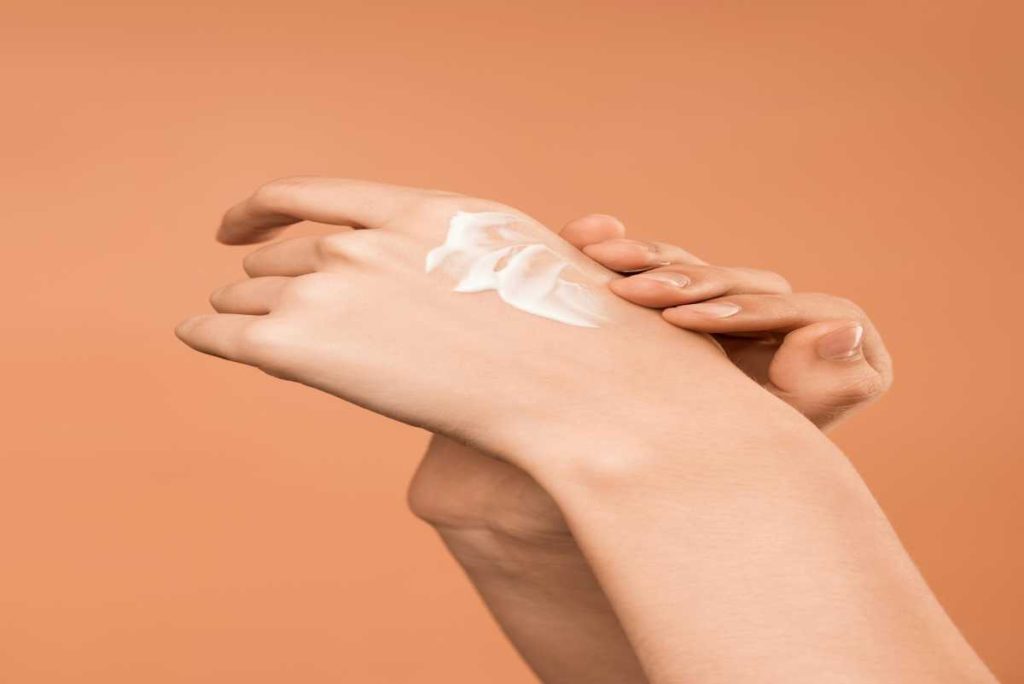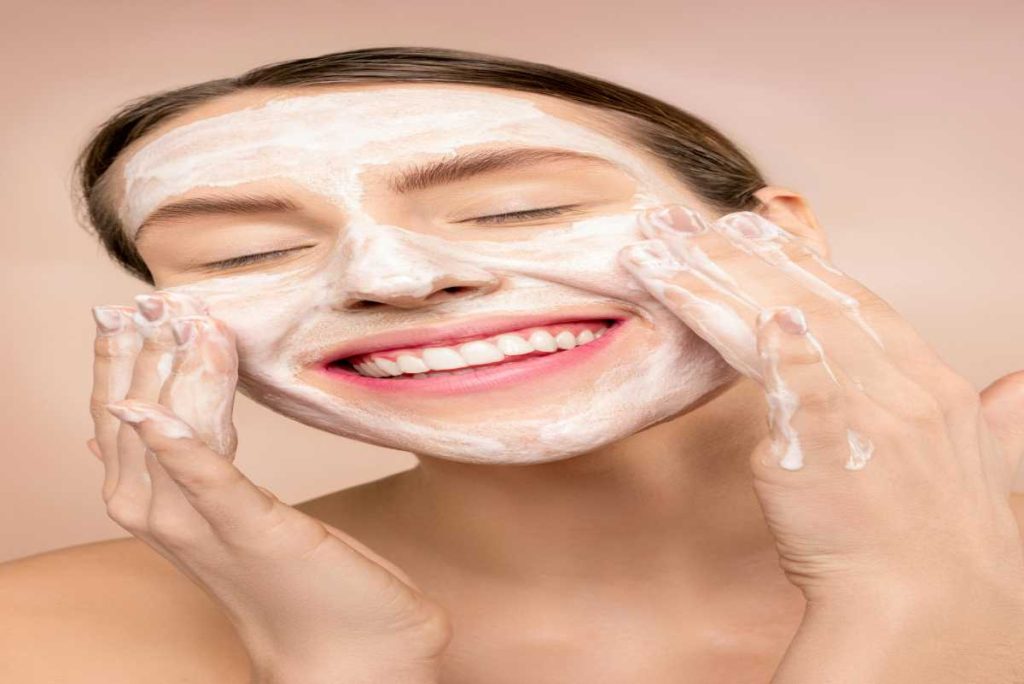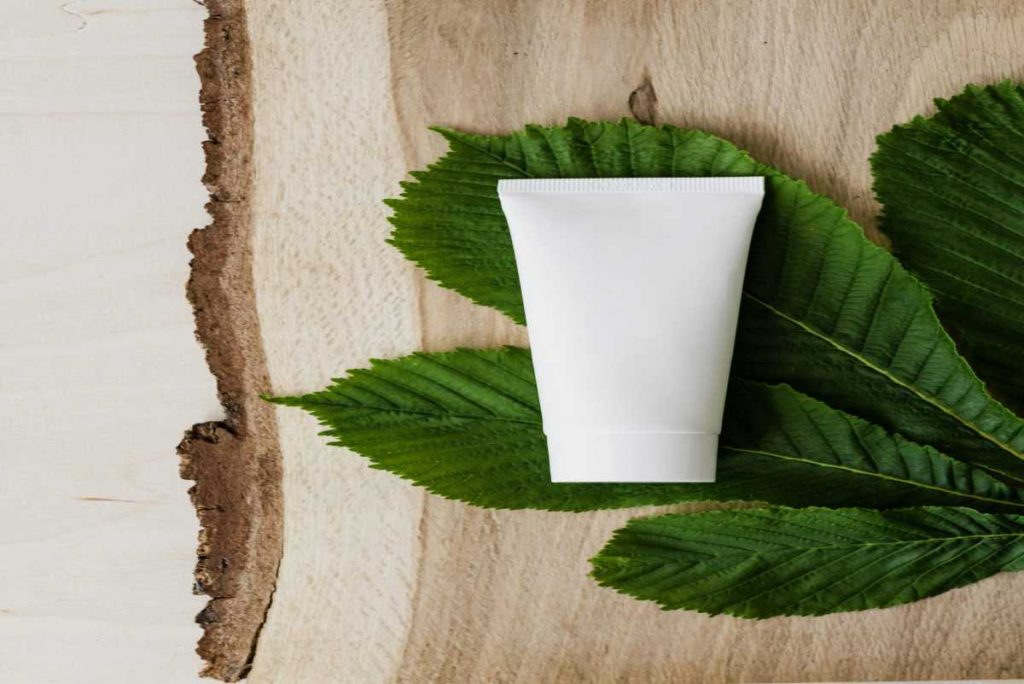Achieving and maintaining healthy skin is a common goal for many, but with the overwhelming amount of information available, it can be challenging to know where to start.
Whether you’re dealing with acne, dryness, or signs of aging, establishing a proper skincare routine is essential.
In this blog, we will explore the top five tips for effective skincare, providing you with in-depth information to help you achieve glowing, healthy skin.
1. Understand Your Skin Type

Why It Matters
Before diving into any skincare routine, it’s crucial to understand your skin type. Your skin type influences the products you should use and how you care for your skin. Knowing your skin type can save you time and money, ensuring you choose products that truly benefit your skin.
Common Skin Types
- Normal: Balanced, neither too oily nor too dry. This skin type typically has a smooth texture and few imperfections.
- Oily: Characterized by excess oil production, leading to shiny skin and larger pores. Oily skin is often prone to acne and blackheads.
- Dry: Often feels tight, rough, or flaky, usually due to lack of moisture. This skin type may have more visible lines and a dull appearance.
- Combination: A mix of oily and dry areas, often with an oily T-zone (forehead, nose, chin) and dry cheeks. This type requires a balanced approach to care.
- Sensitive: Prone to redness, irritation, and allergic reactions. Sensitive skin can react to many products and environmental factors.
How to Determine Your Skin Type
To identify your skin type, try the following method:
- Cleanse: Use a gentle cleanser to wash your face, removing all makeup and impurities.
- Wait: Leave your skin bare for about an hour without applying any products.
- Observe: Check how your skin feels:
- If it feels comfortable, you likely have normal skin.
- If it becomes shiny and oily, you have oily skin.
- If it feels tight or looks flaky, you have dry skin.
- If both oily and dry areas are present, you have combination skin.
- If it reacts with redness or irritation, you may have sensitive skin.
Tailoring Your Routine
Once you understand your skin type, you can tailor your skincare routine accordingly. For example:
- Oily Skin: Look for lightweight, oil-free moisturizers and non-comedogenic products to avoid clogging pores. Ingredients like salicylic acid and tea tree oil can help control excess oil.
- Dry Skin: Opt for cream-based cleansers and rich moisturizers that contain hyaluronic acid, glycerin, or ceramides to hydrate and nourish.
- Combination Skin: Use a gentle cleanser that balances oil and hydration, and consider using different products for various areas (e.g., a lightweight gel for the T-zone and a richer cream for dry areas).
- Sensitive Skin: Choose fragrance-free, hypoallergenic products, and incorporate calming ingredients like aloe vera, chamomile, or calendula to reduce irritation.
2. Establish a Consistent Skincare Routine
The Importance of Routine
Consistency is key when it comes to skincare. Establishing a daily routine can help your skin adjust to products and yield better results over time. A basic routine typically includes the following steps:
- Cleansing: Use a gentle cleanser to remove dirt, oil, and makeup. Cleanse twice a day—once in the morning and once at night. Proper cleansing sets the stage for the rest of your routine.
- Toning: Toners can help restore your skin’s pH balance and prepare it for further treatment. Choose an alcohol-free toner to avoid drying out your skin. Look for toners with ingredients like witch hazel or rose water for added benefits.
- Moisturizing: Regardless of your skin type, moisturizing is crucial. Choose a lightweight lotion for oily skin and a thicker cream for dry skin. Moisturizers help lock in hydration and create a barrier against environmental stressors.
- Sun Protection: Apply a broad-spectrum sunscreen daily, even on cloudy days. Sunscreen protects against UV rays, preventing premature aging and skin cancer. Look for a sunscreen that suits your skin type and offers at least SPF 30.
Morning vs. Evening Routine
Your morning and evening routines can differ slightly:
- Morning Routine: Focus on cleansing, toning, moisturizing, and applying sunscreen. Consider incorporating an antioxidant serum, like Vitamin C, to brighten your skin and protect against environmental damage.
- Evening Routine: After cleansing, consider incorporating serums or treatments that target specific skin concerns (e.g., retinoids for aging, salicylic acid for acne). Follow up with your moisturizer to lock in hydration overnight.
Stick to Your Routine
While it may be tempting to switch products frequently, give your skin time to adjust. It often takes several weeks to see noticeable results from new products. Keep a skincare journal to track how your skin responds to different products over time.
3. Stay Hydrated and Maintain a Balanced Diet

The Connection Between Diet and Skin Health
What you consume significantly impacts your skin’s health. A balanced diet rich in vitamins, minerals, and antioxidants can promote a radiant complexion.
Key Nutrients for Healthy Skin
- Vitamin C: Promotes collagen production and helps brighten the skin. Found in citrus fruits, strawberries, kiwi, bell peppers, and leafy greens.
- Omega-3 Fatty Acids: Supports skin barrier function and hydration. Found in fatty fish (salmon, mackerel), flaxseeds, chia seeds, and walnuts.
- Zinc: Helps with healing and reduces inflammation. Found in nuts, seeds, whole grains, and legumes. Zinc is particularly beneficial for acne-prone skin.
- Antioxidants: Protect against oxidative stress and environmental damage. Foods high in antioxidants include berries, dark chocolate, green tea, and artichokes.
Hydration Matters
Staying hydrated is vital for maintaining skin elasticity and preventing dryness. Aim to drink at least eight glasses of water a day. If you struggle with water intake, consider:
- Infused Water: Add fruits, herbs, or cucumbers to your water for flavor and added nutrients.
- Herbal Teas: Choose caffeine-free options like chamomile or peppermint for hydration.
- Water-Rich Foods: Incorporate foods like cucumbers, watermelon, oranges, and soups, which have high water content, into your diet.
Avoid Processed Foods
Limit your intake of processed foods, sugars, and excessive dairy, as they can contribute to skin issues like acne and inflammation. Instead, focus on whole, nutrient-dense foods that promote skin health.
Supplements
If you find it challenging to get enough nutrients through your diet, consider discussing supplements with a healthcare provider. Fish oil supplements can provide omega-3 fatty acids, while multivitamins can help fill in nutritional gaps.
4. Protect Your Skin from the Sun

The Dangers of UV Rays
Sun exposure is one of the leading causes of skin damage, leading to premature aging, dark spots, and increased risk of skin cancer. Protecting your skin from UV rays is crucial for long-term skin health.
Types of UV Rays
- UVA Rays: Penetrate deep into the skin and are primarily responsible for aging and wrinkles.
- UVB Rays: Affect the surface of the skin and are the main cause of sunburn. They also play a significant role in developing skin cancer.
How to Protect Your Skin
- Use Sunscreen: Apply a broad-spectrum sunscreen with an SPF of at least 30 daily. Look for water-resistant formulas if you’re swimming or sweating. Reapply every two hours, especially if you’re active outdoors.
- Seek Shade: Limit direct sun exposure, especially between 10 a.m. and 4 p.m. when UV rays are strongest. If you must be outside, seek shade under trees, umbrellas, or canopies.
- Wear Protective Clothing: Consider wearing wide-brimmed hats, sunglasses with UV protection, and long-sleeved clothing made of UV-blocking fabric. Many brands offer fashionable options that provide sun protection.
- Avoid Tanning Beds: Tanning beds can cause serious skin damage and increase your risk of skin cancer. Opt for self-tanning products or bronzers for a sun-kissed glow without the harm.
Consider Supplements
Some studies suggest that certain supplements, like antioxidants (e.g., Vitamin E and Vitamin C), can help protect the skin from UV damage. However, they should complement, not replace, topical sunscreen. Always consult with a healthcare provider before starting new supplements.
5. Regularly Exfoliate and Treat Your Skin

The Role of Exfoliation
Exfoliation removes dead skin cells from the surface of your skin, promoting cell turnover and revealing brighter, smoother skin underneath. It can also help prevent clogged pores, reducing the likelihood of breakouts.
Types of Exfoliation
- Physical Exfoliation: Involves scrubs and brushes that manually remove dead skin. Use gentle products to avoid irritation and micro-tears in the skin.
- Chemical Exfoliation: Utilizes acids (AHAs and BHAs) to dissolve dead skin cells. AHA (like glycolic acid) is great for dry skin, while BHA (like salicylic acid) is ideal for oily and acne-prone skin.
How Often to Exfoliate
Exfoliating 1-3 times a week is typically sufficient for most skin types. Over-exfoliating can lead to irritation and damage the skin barrier. Always listen to your skin—if it feels sensitive or irritated, reduce the frequency of exfoliation.
Treating Specific Concerns
Incorporate targeted treatments based on your skin concerns:
- Acne: Look for products containing salicylic acid or benzoyl peroxide, which can help clear breakouts and reduce inflammation.
- Aging: Use retinoids or products with peptides to boost collagen production and reduce fine lines and wrinkles. Start with a lower concentration to allow your skin to acclimate.
- Hyperpigmentation: Consider vitamin C serums or products with niacinamide to help even skin tone and reduce dark spots. Licorice root extract is another excellent option for brightening the skin.
Listen to Your Skin
Always pay attention to how your skin responds. If you notice irritation or increased sensitivity, reduce the frequency of exfoliation and treatments. Patch-test new products before full application to minimize adverse reactions.
Conclusion: Embrace Your Skincare Journey
Caring for your skin is a lifelong journey, and the tips outlined in this blog can help you establish a solid foundation for healthy skin. Remember, everyone’s skin is unique, and what works for one person may not work for another. Be patient and open to experimenting with products and routines to find what suits your skin best.
Final Thoughts
- Consult a Dermatologist: If you’re unsure about your skincare needs or have persistent skin issues, consider consulting a dermatologist for personalized advice and treatment options. They can recommend prescription products or treatments that may be more effective.
- Enjoy the Process: Skincare should be a self-care ritual that brings you joy. Find products that you love and enjoy taking care of your skin. Incorporating mindfulness practices, such as meditation or yoga, can further enhance your skincare routine.
The Holistic Approach
Remember that skincare goes beyond just topical products. Factors like stress, sleep, and mental well-being also significantly impact your skin health. Prioritize sleep hygiene, practice stress management techniques, and engage in regular physical activity to promote overall wellness.
Be Adaptable
As your skin changes due to age, environment, or lifestyle factors, don’t hesitate to adjust your routine. Seasonal changes may require different products or approaches, and hormonal fluctuations can impact your skin’s needs.
With consistent care, proper protection, and a balanced diet, you can achieve the radiant, healthy skin you’ve always wanted. Embrace your skincare journey, and remember that beautiful skin starts from within!

